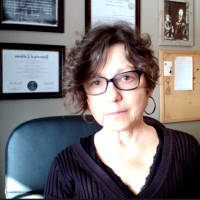Introduction
When the World Health Organization announced a viral pandemic in early 2020, universities around the world swiftly adopted a wide range of emergency measures. These included remote learning, social distancing protocols, and eventually, vaccine mandates.
On the face of it, the policies followed the precautionary principle: better to be safe than sorry. But as time passed, it became clear that these measures were not — or at least not only — about safety. They came to signal a profound transformation, leaving their mark on universities as institutions meant to serve as spaces of intellectual exchange, critical inquiry, and democratic deliberation.
Over the past years, I have studied the Covid-19 policy response in the postsecondary sector, with a focus on Canada. I conducted a critical policy analysis of the expert literature on “vaccine uptake” among students (1), in-depth interviews with students (2), and a scoping review of academic governance in the Covid era in five Canadian postsecondary institutions (3), while reflecting on, and writing about, my own experience teaching through the crisis (4).
The conclusion I have drawn is sobering: the policy response in academia was not simply a reaction to a perceived public health crisis but the broader entrenchment of a culture of self-righteousness and coercion that stifled dissent, sidelined collegial governance, and subjected students to subtle yet powerful forms of intellectual and moral pressure.
And these were not temporary errors made under stress — they were institutional betrayals to the normative role of universities, betrayals whose lessons demand reflection. At stake was not simply health policy but the manufacture of consent — paradoxically within institutions whose normative mission includes to foster independent thought. What follows is the story of how I came to this view.
The Student Experience: Between Silence and Strain
My systematic exploration of the lives of students began with a critical policy analysis of the peer-reviewed literature on “vaccine uptake” among postsecondary students. There, I found that caution towards taking a novel pharmaceutical intervention rolled out under emergency use (EUA) was delegitimized by framing it as a “problem” to be solved — the “problem” of “vaccine hesitancy” (1).
By pathologizing “hesitancy”, the academic literature actively undermined the very kind of critical reasoning academia claims to nurture. Remarkably, this pathologizing of hesitancy persisted even when the intervention in question was authorized under emergency provisions by regulators with longstanding conflicts of interest (5, 6), and produced by companies with troubling legal records (7).
Subsequently, I conducted in-depth interviews with university students to explore how vaccine mandates shaped their academic and personal lives (2). Most complied. A few resisted. And a few even passionately defended them. One way or the other, all were affected. Those who supported mandates cited a sense of responsibility to protect others – as one student put it: “I’m doing my part to keep vulnerable household members protected”. Others spoke of distress, confusion, fear.
Compliance with authority was framed as being “scientifically minded” and “intelligent”. Not complying was framed as a mark of stupidity. In the words of one interviewee: “This is me making an intelligent decision … people who aren’t vaccinated are stupid”. However, students who complied often reported feeling that their consent was not truly free: “Ultimately, did I really have a choice?” one interviewee told me.
In this climate, critical discussion became impossible. Students reported avoiding conversations that might cast them as “anti-science”, “conspiratorial,” or politically suspect — “right-winger”, somehow denoting moral inferiority — even when they had perfectly reasonable questions.
Students who bent to coercion were emotionally broken. As one of them put it: “I had to go against what I believed in to maintain a spot in society. It felt like hurting myself, breaking something in me, being forced to do something I did not want to do.”
Those who chose not to vaccinate described isolation, anxiety, distrust: “The fact that we are being bombarded by this constant messaging, that we should be afraid. It signifies to me that, hey, something’s really wrong here. Why are you telling us this?”
More Than Public Health
As yet another study — a critical scoping review of academic governance in the Covid era – further revealed, universities framed their Covid policies as a response to a public health imperative, invoking the authority of science to impose access controls, masking requirements, and vaccine mandates (8).
Yet most institutions went well beyond what public health authorities demanded — or advised but not required. In fact, we found that in most cases universities implemented policies far more restrictive than public health guidelines, with vaccine mandates remaining in effect well after public health authorities had dropped them.
A notable outlier was Redeemer University, a small Christian institution in the province of Ontario, Canada, which stood nearly alone in resisting mandates and respecting bodily autonomy — with no evidence that this PSI did any worse than those imposing draconian measures.
Notably, while public-facing communications emphasized “following the science,” internal dynamics told a different story: university administrators frequently centralized authority under the banner of crisis, ignoring contradictory evidence, and excluding dissenting voices.
Appeals to “scientific consensus” were selective, sidelining or ignoring actual scientific evidence — evidence of exceedingly low infection fatality rates in most age groups (9, 10); of broad, strong and widespread natural immunity (11, 13); of multiple ways to protect vulnerable members of the academic community, through prophylaxis and early treatment options that offered sound alternatives to shutting down entire campuses (14, 17); of early signals of vaccine harms, disturbingly during reproductive years, as is the case with most postsecondary students (18, 20); and of limited or nonexistent “vaccine effectiveness”, especially in reducing viral transmission (21, 22) — the leading scientific rationale for imposing mass vaccination mandates, with some still in effect, at least in some areas of study.
Problematically, our investigation also found evidence of absence — an absence that spoke louder than the many strong statements about “The Science”: no consideration of the balance of risks and benefits of the policy measures implemented, not only for the short-term, but importantly for the long term. It should surprise no one that recent — and even early — estimations of the negative repercussions of these measures indicate a bleak future for the ability to learn and thrive of generations to come (23, 24).
Most sadly, student organizations overall internalized the dominant Covid narrative of the virus as an “equal opportunity killer” and demanded stricter restrictions, while a silent majority complied — to continue their studies, move on with their lives, avoid social ostracism. But when students must choose between intellectual / moral integrity and belonging, universities cease to educate — they indoctrinate.
Finally, otherwise commendable values like equity, diversity, and inclusion (EDI) championed in academia, were often weaponized to dismiss, silence or even punish those who dissented from official policies. Dissenters, including members of marginalized groups whom EDI frameworks claim to protect, found their rights ignored, their voices excluded, and their freedoms curtailed in the name of collective safety. In this way, EDI rhetoric was paradoxically used to justify the suppression of diverse viewpoints and the unequal treatment of those who refused to fall in line.
Authoritarianism ‘Light’?
A clear pattern has emerged from my distinct but convergent studies: it has not been classical authoritarianism, but something more insidious: a culture in which fear, moral pressure, and institutional messaging that jointly suppressed any challenge to institutional orthodoxy. Unlike the military dictatorships I grew up under in the 1970s in Argentina, orthodoxy was not enforced at point of gun, or under threat of physical banishing.
Instead, it was enforced through social banishing — students told to “think critically,” yet also instructed to trust authority without question. “Beware of misinformation” became the euphemism for “accept only institutional narratives” that rebranded obedience as solidarity, in a veritable case of Orwellian doublespeak. But true critical thinking cannot coexist with uncritical deference to authority.
In the case of many publicly dissenting colleagues, their professional ruin came to illustrate the “threat of a good example” that, like in geopolitics, had a chilling effect on anyone considering to publicly question orthodoxy. And suppression was achieved not by armed forces but through the voice of professors and administrators who came to embody “The Science” — one invested in quasi-religious authority.
Teaching since the onset of Covid — and the slow but steady development of my own awareness of these structural issues — confirmed what my research had revealed: many students were in shock — afraid, confused, and immersed in messaging that made non-compliance a signifier of stupidity, recklessness, and even immorality. In my assessment, they were also heavily propagandized, not by any single actor but by an institutional apparatus enforcing moral and political alignment with orthodoxy under the guise of a “scientific consensus” achieved once dissent had been banished.
Democratic Governance Under Lockdown?
Was democratic governance during Covid truly “under lockdown,” as some might argue, or simply adapted to crisis? As our scoping review found, many features of collegial decision-making were sidelined. Even members of the academic community who had long criticized the corporate drift of university governance, rarely questioned, and sometimes actively endorsed, sweeping “emergency powers”. The language of a “public health crisis” lent a veneer of legitimacy to rapid, opaque decisions of questionable scientific basis and deeply troubling ethical implications.
One might argue that Covid-19 policies were temporary measures taken under extreme circumstances. But some effects endure. Those of us who questioned these measures rarely discuss them, whether with colleagues who supported them or our own students. Nor have those who supported, implicitly or explicitly, the exclusion of non-compliant colleagues or students apologized. And the lesson imparted to students risks becoming embedded in the ethos of the university — compliance with “expert authorities” is virtue, dissent is vice.
Coerced Consent, Manufactured Consensus, and the Future of the University
The bottom line? During the Covid era, universities normalized coercion, exclusion, the suppression of dissent, and expansive institutional overreach — all justified in the name of health, solidarity, and an alleged “common good.” What was termed “vaccine uptake” — sometimes even “acceptance” — often reflected coerced consent. What was portrayed as “scientific consensus” was, in practice, the product of censorship, intimidation, and the deliberate shutting down of open debate.
If universities fail to examine these intellectual and ethical failures, they risk shifting from spaces of genuine inquiry into instruments of consensus management. The danger lies not in disagreement, but in its silencing; not in “misinformation”, but in an institutional allergy to grapple with inconvenient questions.
Promoting a university culture of genuine debate and critical inquiry will take more than administrative tweaks. It will require acknowledging — openly — how fear, moralism, and crisis rhetoric displaced core academic values. It will require reckoning with how these conditions emerged so easily, and why they proved so resilient.
Only by confronting this history can universities hope to truly uphold their ostensible mission: to foster spaces where debate is not feared, evidence can be contested, and young people are equipped to ask their own questions and question power, rather than recite approved answers.
References
- Chaufan C. Is Covid-19 “vaccine uptake” in postsecondary education a “problem”? A critical policy inquiry. Health (London). Published online November 15, 2023:13634593231204169. doi:10.1177/13634593231204169
- Chaufan C, Hemsing N. In the name of health and illness: An inquiry into Covid-19 vaccination policy in postsecondary education in Canada. Journal of Research and Applied Medicine. 2023;1(6):1-21. doi:10.31235/osf.io/gdbj3
- Chaufan C, Gabbay B, Manwell L, Heredia C. Appraising the Decision-Making Process Concerning COVID-19 Policy in Postsecondary Education in Canada: A Critical Scoping Review. Published online July 4, 2025. doi:10.20944/preprints202507.0447.v1
- Chaufan C, Hemsing, N. Reflections on academia in the COVID-19 era: Implications for policy, ethics, and democratic governance. In: Covid-19 Pandemonium: A Pandemic of Ignorance, Fear and Greed. Ekstasis Editions America; 2025.
- Lexchin J, Kohler JC, Gagnon MA, Crombie J, Thacker P, Shnier A. Combating corruption in the pharmaceutical arena. Indian J Med Ethics. 2018;3(3):234-239. doi:10.20529/IJME.2018.022
- Light DW, Lexchin J, Darrow JJ. Institutional Corruption of Pharmaceuticals and the Myth of Safe and Effective Drugs. J Law Med Ethics. 2013;41(3):590-600. doi:10.1111/jlme.12068
- US Department of Justice. Office of Public Affairs | Pfizer Agrees to Pay Nearly 60M to Resolve False Claims Allegations Relating to Improper Physician Payments by Subsidiary | United States Department of Justice. January 24, 2025. Accessed June 11, 2025. https://www.justice.gov/opa/pr/pfizer-agrees-pay-nearly-60m-resolve-false-claims-allegations-relating-improper-physician
- Chaufan C, Gabbay B, Manwell L, Heredia C. Appraising the Decision-Making Process Concerning COVID-19 Policy in Postsecondary Education in Canada: A Critical Scoping Review. Published online July 4, 2025. doi:10.20944/preprints202507.0447.v1
- COVID-19 Forecasting Team. Variation in the COVID-19 infection–fatality ratio by age, time, and geography during the pre-vaccine era: a systematic analysis. The Lancet. 2022;399(10334):1469-1488. doi:10.1016/S0140-6736(21)02867-1
- Pezzullo AM, Axfors C, Contopoulos-Ioannidis DG, Apostolatos A, Ioannidis JPA. Age-stratified infection fatality rate of COVID-19 in the non-elderly population. Environmental Research. 2023;216:114655. doi:10.1016/j.envres.2022.114655
- Bendavid E, Mulaney B, Sood N, et al. COVID-19 antibody seroprevalence in Santa Clara County, California. International Journal of Epidemiology. 2021;50(2):410-419. doi:10.1093/ije/dyab010
- Majdoubi A, Michalski C, O’Connell SE, et al. A majority of uninfected adults show preexisting antibody reactivity against SARS-CoV-2. JCI Insight. 2021;6(8). doi:10.1172/jci.insight.146316
- Ridgway JP, Tideman S, Wright B, Robicsek A. Rates of COVID-19 Among Unvaccinated Adults With Prior COVID-19. JAMA Netw Open. 2022;5(4):e227650. doi:10.1001/jamanetworkopen.2022.7650
- Carvallo H, Hirsch R, Alkis P, Contreras V. Study of the Efficacy and Safety of Topical Ivermectin + Iota-Carrageenan in the Prophylaxis against COVID-19 in Health Personnel. J biomed res clin investig. 2020;2(1). doi:10.31546/2633-8653.1007
- Kerr L, Cadegiani FA, Baldi F, et al. Ivermectin Prophylaxis Used for COVID-19: A Citywide, Prospective, Observational Study of 223,128 Subjects Using Propensity Score Matching. Cureus. 2022;14(1). doi:10.7759/cureus.21272
- McCullough PA, Kelly RJ, Ruocco G, et al. Pathophysiological Basis and Rationale for Early Outpatient Treatment of SARS-CoV-2 (COVID-19) Infection. The American Journal of Medicine. 2021;134(1):16-22. doi:10.1016/j.amjmed.2020.07.003
- Risch HA. Early Outpatient Treatment of Symptomatic, High-Risk COVID-19 Patients That Should Be Ramped Up Immediately as Key to the Pandemic Crisis. American Journal of Epidemiology. 2020;189(11):1218-1226. doi:10.1093/aje/kwaa093
- Fraiman J, Erviti J, Jones M, et al. Serious adverse events of special interest following mRNA COVID-19 vaccination in randomized trials in adults. Vaccine. Published online August 31, 2022. doi:10.1016/j.vaccine.2022.08.036
- Karrow NA, Shandilya UK, Pelech S, et al. Maternal COVID-19 Vaccination and Its Potential Impact on Fetal and Neonatal Development. Vaccines. 2021;9(11). doi:10.3390/vaccines9111351
- Mansanguan S, Charunwatthana P, Piyaphanee W, Dechkhajorn W, Poolcharoen A, Mansanguan C. Cardiovascular Manifestation of the BNT162b2 mRNA COVID-19 Vaccine in Adolescents. Tropical Medicine and Infectious Disease. 2022;7(8):1-13. doi:10.3390/tropicalmed7080196
- Brown CM. Outbreak of SARS-CoV-2 Infections, Including COVID-19 Vaccine Breakthrough Infections, Associated with Large Public Gatherings — Barnstable County, Massachusetts, July 2021. MMWR Morb Mortal Wkly Rep. 2021;70. doi:10.15585/mmwr.mm7031e2
- Singanayagam A, Hakki S, Dunning J, et al. Community transmission and viral load kinetics of the SARS-CoV-2 delta (B.1.617.2) variant in vaccinated and unvaccinated individuals in the UK: a prospective, longitudinal, cohort study. The Lancet Infectious Diseases. 2021;0(0). doi:10.1016/S1473-3099(21)00648-4
- Herby J, Jonung L, Hanke SH. A Literature Review and Meta-Analysis of the Effects of Lockdowns on COVID-19 Mortality. Published online 2022:62. https://sites.krieger.jhu.edu/iae/files/2022/01/A-Literature-Review-and-Meta-Analysis-of-the-Effects-of-Lockdowns-on-COVID-19-Mortality.pdf
- Walach H, Traindl H, Prentice J, et al. Carbon dioxide rises beyond acceptable safety levels in children under nose and mouth covering: Results of an experimental measurement study in healthy children. Environmental Research. 2022;212:113564. doi:10.1016/j.envres.2022.113564
- This article has also been published in Substack (https://claudiachaufanmdphd.substack.com/p/teaching-critical-thinking-or-manufacturing?r=1ss0wo). It draws from my research on the Covid policy response in the postsecondary sector↩︎
(Featured Image: “Grads Absorb the News” by KitAy is licensed under CC BY 2.0.)





